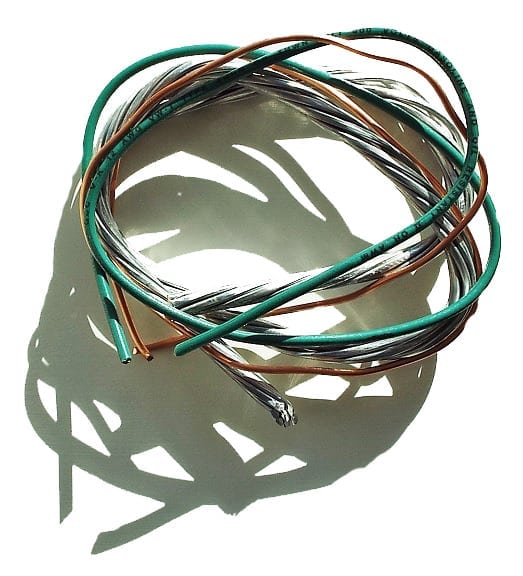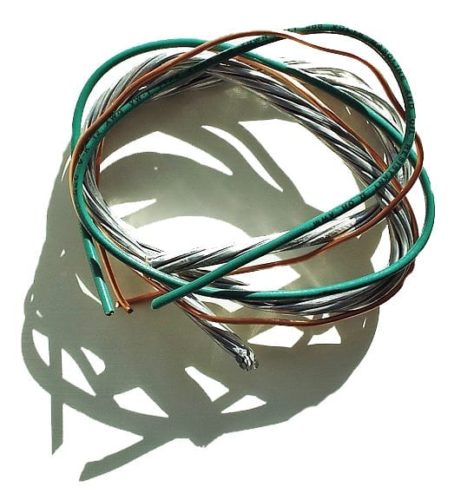
The grounding/bonding wire.
This poor wire is a bit schizophrenic. It has different names depending on where it is terminated and many people accuse it of doing things it is not responsible for.
 For example when we run this wire to our house grounding electrode system (ground rods, Ufer grounds, metal water pipe etc) we call it a GEC, or Grounding Electrode Conductor. When we run it from switches, receptacles, lights and other points of use to our electrical panels we call it an EGC, or Equipment Grounding Conductor. The two uses are tied together as if they were “one” in your electrical service equipment (your main panel).
For example when we run this wire to our house grounding electrode system (ground rods, Ufer grounds, metal water pipe etc) we call it a GEC, or Grounding Electrode Conductor. When we run it from switches, receptacles, lights and other points of use to our electrical panels we call it an EGC, or Equipment Grounding Conductor. The two uses are tied together as if they were “one” in your electrical service equipment (your main panel).
This leads to considerable confusion over what it actually “does.”
In simplistic terms, the GEC (grounding electrode conductor) is a path to dissipate static charges and surges safely back to the earth via the ground rods, Ufer ground, or metal water pipe it is attached to.
The EGC (equipment grounding conductor) serves two functions:
- It provides an effective ground fault current path to trip a breaker or blow a fuse in the event that there is a short to the metal components being bonded.
- It provides a path to earth to dissipate static charges and surges that would otherwise build up on the electrical system.
There is a myth that is pervasive among home inspectors, and even some electricians, that the equipment grounding conductor is there to prevent shock. There is another even more serious myth that all electricity is trying to go back to earth and this is how it gets there. It is really best to forget both of these myths if one is to stay safe.
The reason for the confusion is that if there is a “short” to the grounded metal components and the circuit is tripped off, one obviously can’t get a shock from something that is turned off. The dangerous aspect of this is that the metal components can be energized up to the amperage of the circuit (and even beyond) without tripping the breaker and a person touching the metal components would still get a shock.
If the person happened to be touching the grounded metal component at the very time the fault occurred, they could still get a shock–albeit a very short one. It still could be enough to arrest one’s heart or scare one off a ladder resulting in possible serious injury. So in this respect the equipment grounding conductor is not a true shock protection component of the system.
Obviously with no ground wire at all we have no chance of shutting of the equipment in the event of a short and we do actually increase the chance of getting shocked. The solution is not just to install the ground wire–because that will only improve the situation–not eliminate the risk.
To reduce the risk of shock we must install GFCI protective devices, either as receptacles at points of use or as circuit breakers that protect the whole circuit. We do not even need a ground wire to gain this protection. The GFCI devices do not need a ground to function and this is why they are so important and valuable on older homes without equipment grounds until the systems can be upgraded.
The most critical thing to remember when you are working around live wires is as long as you do not contact grounded metal components and are physically isolated from the actual earth (not standing barefoot on concrete or kneeling on the wet ground) you have pretty much zero chance of getting a shock when you touch an energized component. Of course if you touch the neutral and hot wires you will indeed get a shock. Because we might make a mistake or not realize when we are grounding ourselves, we install GFCI devices to take care of us.
It is best practice to never assume metal components are not energized.
By Charles Buell, Real Estate Inspections in Seattle
If you enjoyed this post, and would like to get notices of new posts to my blog, please subscribe via email in the little box to the right. I promise NO spamming of your email! 🙂